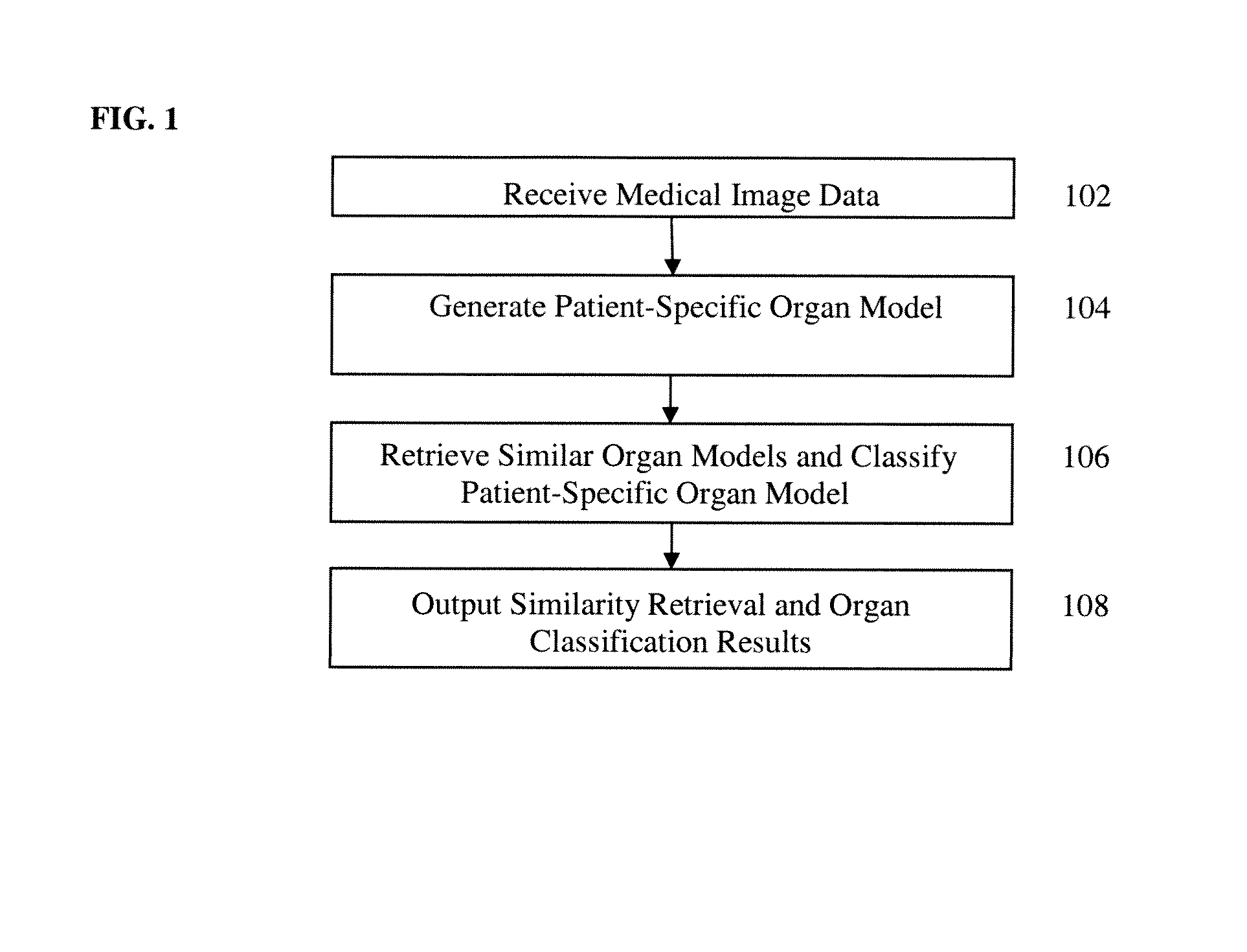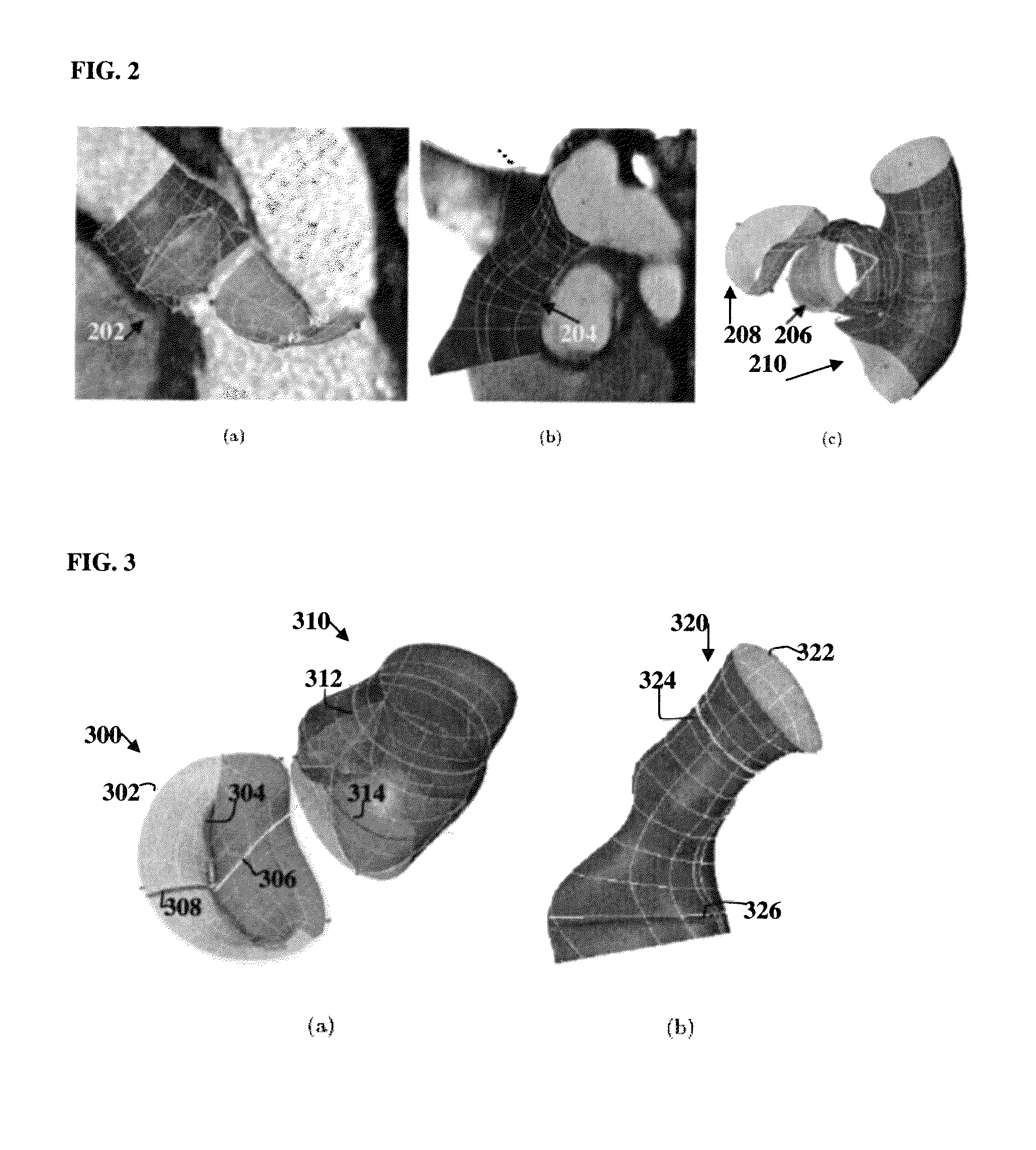Method and system for medical decision support using organ models and learning based discriminative distance functions
a discriminative distance and organ model technology, applied in the field of model based decision support, can solve the problems of high cost of vhd treatment, high in-hospital death rate of conventional vhd treatment, and efficient and convenient tools
- Summary
- Abstract
- Description
- Claims
- Application Information
AI Technical Summary
Benefits of technology
Problems solved by technology
Method used
Image
Examples
Embodiment Construction
[0015]The present invention relates to image based organ classification using learning based discriminative distance functions for model-based decision support. Embodiments of the present invention are described herein to give a visual understanding of various organ classification methods. A digital image is often composed of digital representations of one or more objects (or shapes). The digital representation of an object is often described herein in terms of identifying and manipulating the objects. Such manipulations are virtual manipulations accomplished in the memory or other circuitry / hardware of a computer system. Accordingly, is to be understood that embodiments of the present invention may be performed within a computer system using data stored within the computer system. While embodiments of the present invention described herein exemplify applications to heart valve disease, the method and system is not limited thereto and may be similarly used for other organs and in an...
PUM
 Login to View More
Login to View More Abstract
Description
Claims
Application Information
 Login to View More
Login to View More - R&D
- Intellectual Property
- Life Sciences
- Materials
- Tech Scout
- Unparalleled Data Quality
- Higher Quality Content
- 60% Fewer Hallucinations
Browse by: Latest US Patents, China's latest patents, Technical Efficacy Thesaurus, Application Domain, Technology Topic, Popular Technical Reports.
© 2025 PatSnap. All rights reserved.Legal|Privacy policy|Modern Slavery Act Transparency Statement|Sitemap|About US| Contact US: help@patsnap.com



